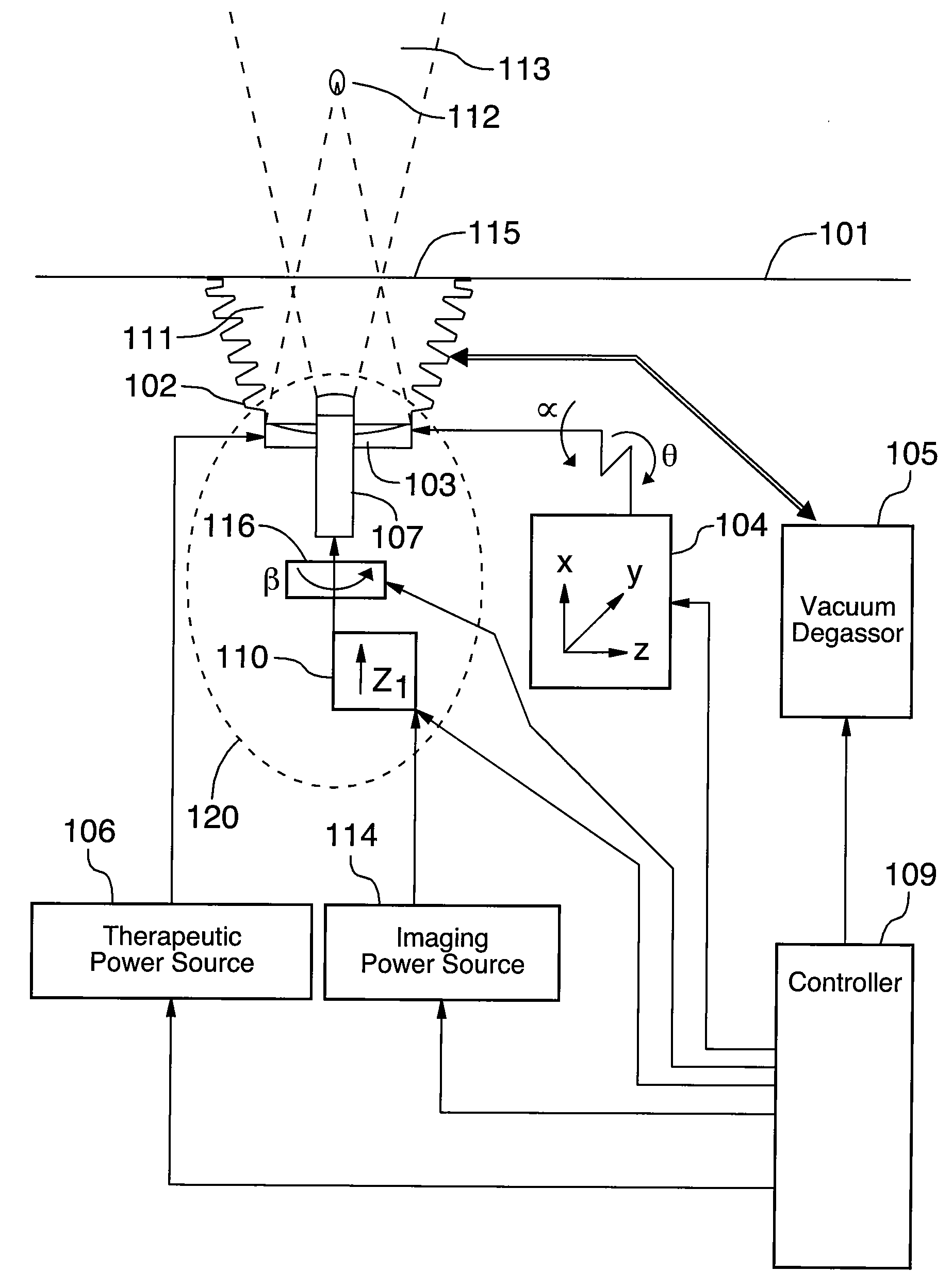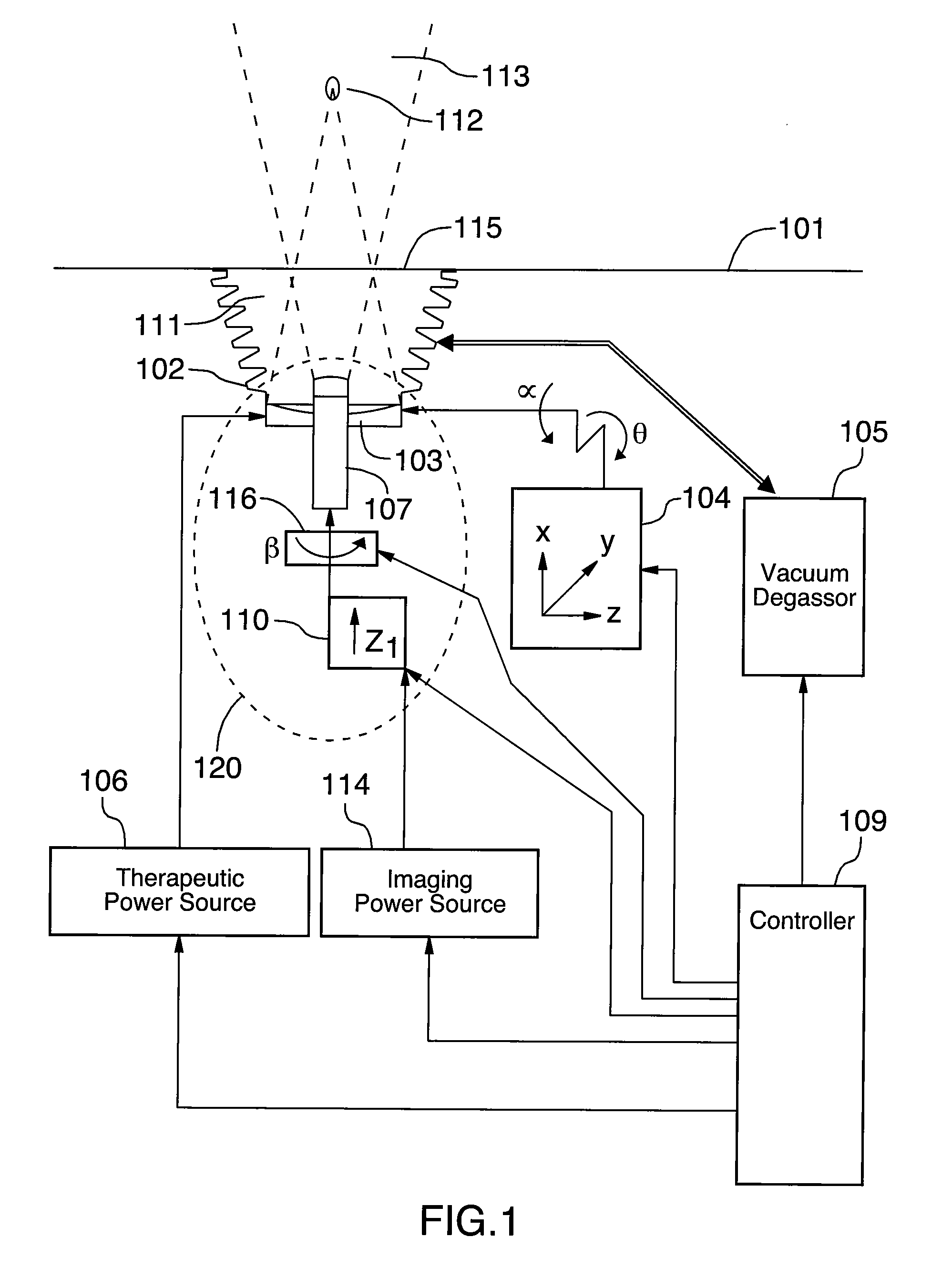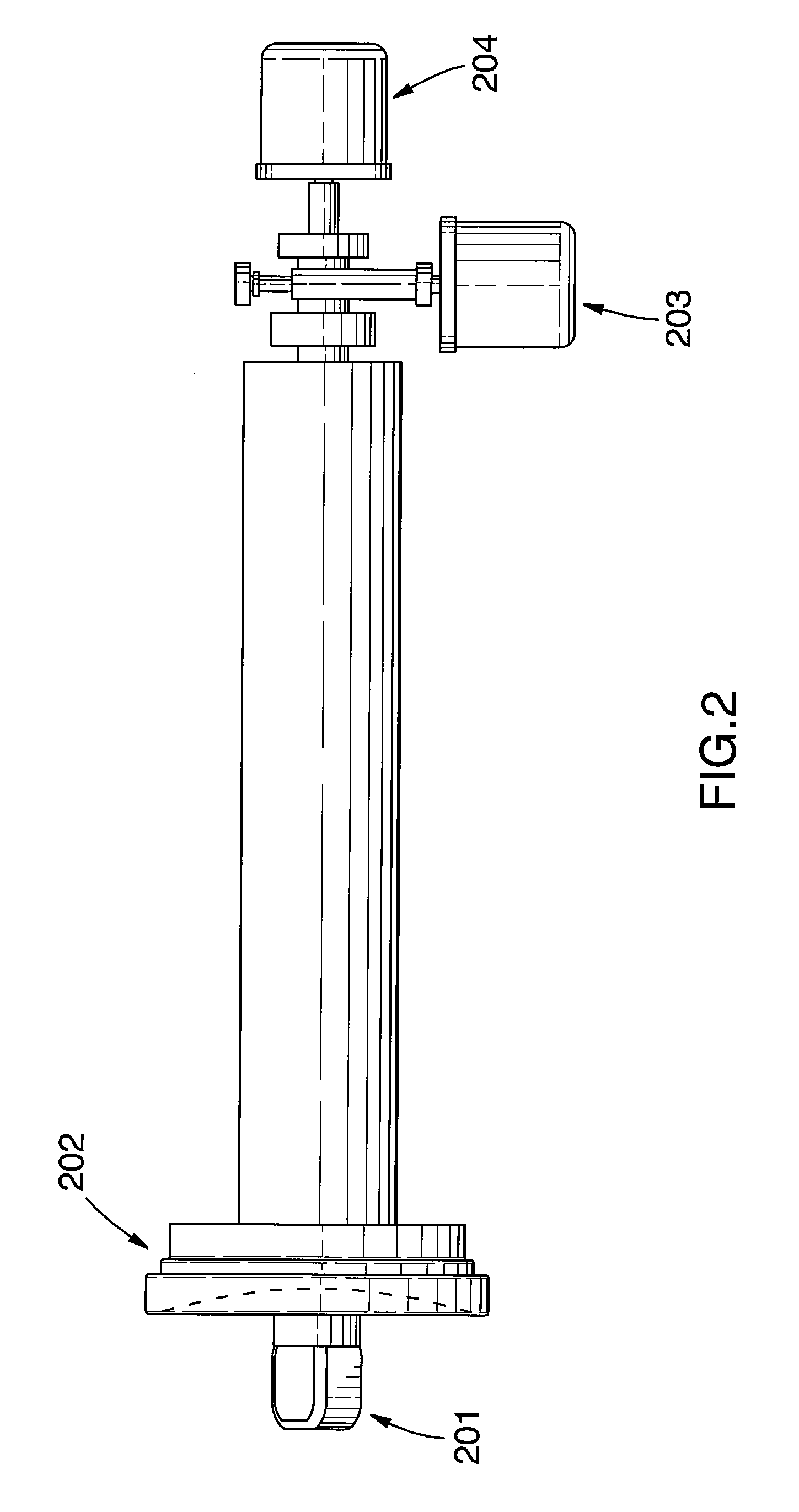High intensity focused ultrasound treatment head and system
- Summary
- Abstract
- Description
- Claims
- Application Information
AI Technical Summary
Problems solved by technology
Method used
Image
Examples
Embodiment Construction
[0108]FIG. 1 is a schematic of the structure of the system according to the invention. The system comprises a therapeutic bed 101, a chamber 102, a combined head 120, a motional apparatus 104, a therapeutic power source 106, an imaging power source 114, a vacuum degassor 105, and a controller 109.
[0109]The therapeutic transducer 103, the imaging transducer 107, and a rotator 116, together form the combined head 120. The combined head 120 may also include an actuator 110.
[0110]The patient lies on the therapeutic bed 101, oriented to present the best access to the target tissue. Typically, but not always, this requires the patient to be placed with the skin closest to the target tissue over the hole 115 in the bed 101. The hole 115 is connected to a chamber filled with a fluid 111 having sound transmission characteristics similar to that of human tissue. Typically, the fluid 111 is degassed water which is gravity fed into the chamber from the vacuum degassor 105, as directed by the co...
PUM
 Login to View More
Login to View More Abstract
Description
Claims
Application Information
 Login to View More
Login to View More - R&D
- Intellectual Property
- Life Sciences
- Materials
- Tech Scout
- Unparalleled Data Quality
- Higher Quality Content
- 60% Fewer Hallucinations
Browse by: Latest US Patents, China's latest patents, Technical Efficacy Thesaurus, Application Domain, Technology Topic, Popular Technical Reports.
© 2025 PatSnap. All rights reserved.Legal|Privacy policy|Modern Slavery Act Transparency Statement|Sitemap|About US| Contact US: help@patsnap.com



